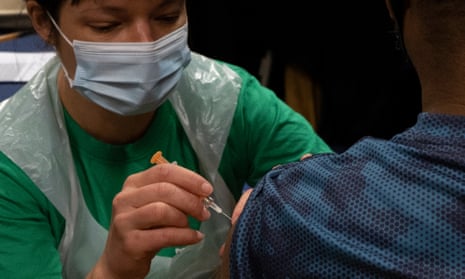“This is a vanishingly rare but sadly quite serious adverse event,” said Prof Jonathan Van-Tam at Wednesday’s press briefing.
The announcement from the Joint Committee on Vaccines and Immunisation (JCVI) recommending the use of alternative vaccines to the AstraZeneca jab for under 30-year-olds comes after 79 reports of rare blood clots and 19 deaths. Despite the message being delivered in a clear, consistent way by scientists and medical professionals, some experts have begun to worry about the impact the news will have on vaccine acceptance and hesitancy.
We must put the risk in context. Currently, the risk of developing blood clots from the AstraZeneca vaccine in the UK is one in 250,000. For women taking oral contraceptive pills, the risk is at a much higher, at one in 2,000 annually. As Stephen Reicher, a member of the Sage subcommittee SPI-B, put it on BBC Newsnight, you are more likely to die falling down the stairs or eating your breakfast than as a result of the AstraZeneca vaccine.
Nevertheless, we know that the perception of risk doesn’t always align with the facts. Just think of how much more worried the average person can be by a bumpy flight than a car journey – even armed with the knowledge that the former is statistically safer than the latter. In terms of vaccines, experts have worried about and documented vaccine hesitancy globally for years. Before the UK’s vaccine rollout, a November 2020 study by Ipsos Mori found that a sizeable 22% of UK respondents stated that they would probably or definitely not accept the vaccine. Luckily, this hasn’t been borne out as time has gone by: ONS statistics show that, as of mid-March, more than 90% of over 70-year-olds have received at least one dose of a Covid-19 vaccine.
So how does the JCVI’s decision look from the perspective of risk management? The academic research points us towards a number of factors. What studies find is that individuals are much more worried about involuntary risks that emerge from activities that they have to do than they are about voluntary ones. They are also much more concerned about unfamiliar risks (like a vaccine for a novel disease) than they are about familiar ones, and risks that affect young people are taken more seriously than those affecting older individuals. We also know that people fear technological hazards more than natural ones.
Then there is the issue of trust: if we have high levels of public trust then individuals will be willing to accept more risk than when we have low levels of public trust. Finally, scale is also important: a potential risk that affects millions of people in a short period of time is amplified in the mind’s eye, as opposed to something like the famous example of getting hit by lightning, that would only affect someone who happens be outside during a storm. Applying these factors to the AstraZeneca vaccine – unfamiliar, effectively involuntary, affecting younger people, in some sense a “technological hazard” – goes to explain why its vanishingly rare side-effects might be cause for concern among some people, despite the objective facts.
Was the correct decision made? Yes and no. The risks are tiny – as the health secretary Matt Hancock noted, you have the same chance of getting a blood clot after a long-haul flight (although, as we’ve established, the comparison is misleading, as the vaccine side-effect is an involuntary risk while long-haul flying should be seen as a voluntary one). In this sense, one could argue that it was an overreaction, although a lesser one than many other European nations. In Sweden, for instance, the AstraZeneca vaccine is now available only for those above 65, which reflects an unwise level of risk aversion. In fact, given the slow pace of its vaccine rollout, it’s a decision that may lead to unnecessary deaths among the unvaccinated.
That said, looking from a risk-benefit perspective, it looks more rational. The Covid-19 pandemic primarily affects older age groups and individuals with underlying conditions. It is not a disease that leads to many deaths or much severe ill-health in healthy people under 30. This was well displayed in the press briefing on the AstraZeneca vaccine by Prof Van-Tam, where it was shown that the risks of the side-effects from the AstraZeneca vaccine were higher than the chances of being admitted to the ICU as a result of Covid-19 for the 20-29 age group.
Based on those numbers from a benefit-risk calculation, the right decision was taken. But the gap between perception and reality cannot be wished away. What we can do is ensure everything is communicated in a transparent and non-alarmist way so that crucial factor – trust in the scientific process – remains high.
Ragnar Löfstedt is professor of risk management and director of the Centre for Risk Management at King’s College London. This was written with George Warren, a PhD student in the department of geography at King’s College London
